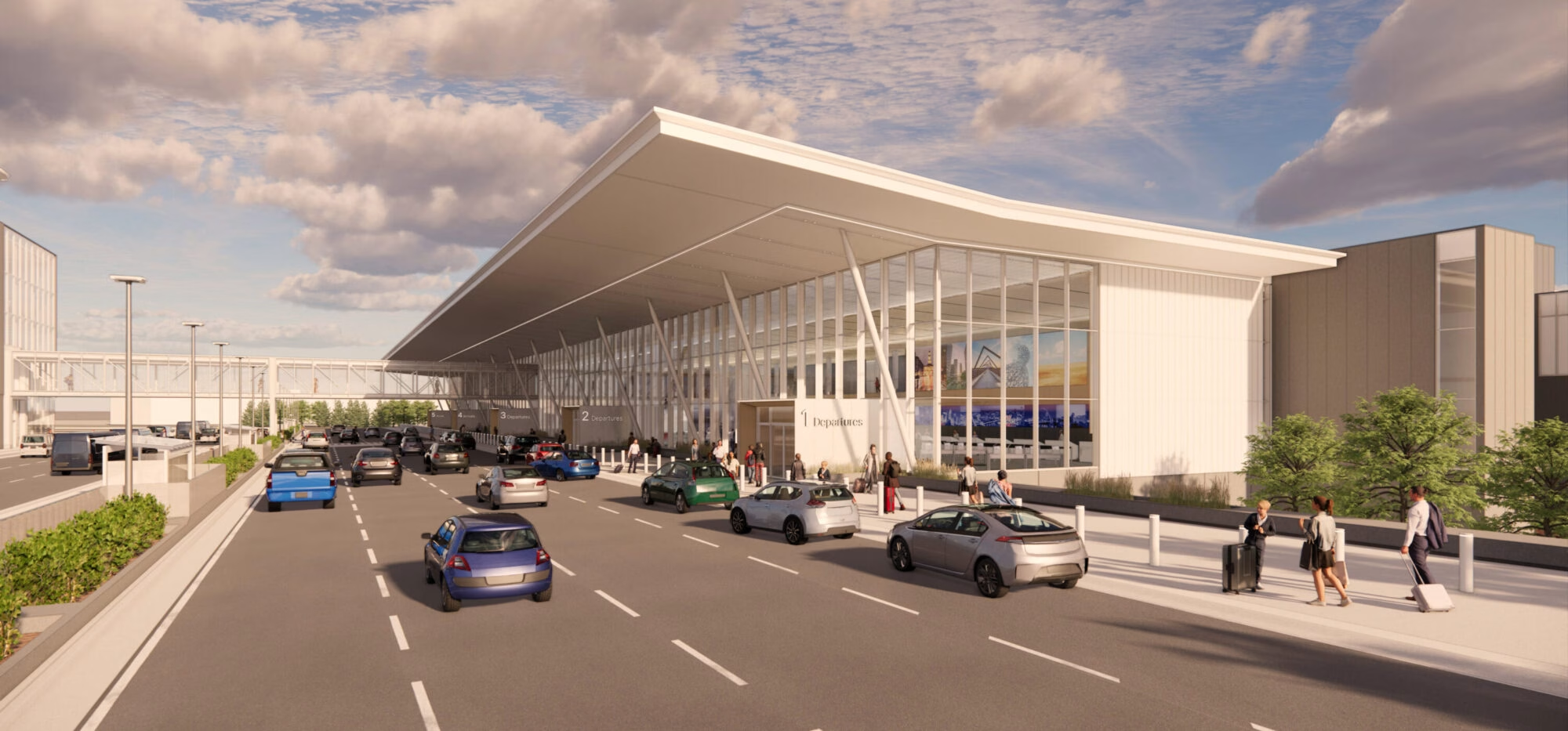Construction is progressing ahead of plan on the new terminal project at Des Moines International Airport. The US $557 million build includes a modern terminal and seven new gates in its first two phases. Meanwhile, the airport authority has approved Phase 3 early, adding four more gates extending toward Fleur Drive because construction costs came in lower than expected. The first segment, the terminal and new gates, is scheduled to open in early 2027, while Phase 3 gates are planned for late 2029. Additionally, the new expansion will eventually give the airport a total of 22 gates by around 2030. New site works include a large parking garage adjacent to the terminal, improving access and circulation for passengers and ground transport.
Project Factsheet
Location: Des Moines International Airport (DSM), Iowa, USA
Projected Investment: Approx. US $557 million
Scope: New terminal building, initial seven gates in Phases 1–2; later four more gates in Phase 3
Timeline: Terminal & initial gates expected early 2027; Phase 3 gates by late 2029
Final Gate Count: Up to 22 gates when full build-out completes by ~2030
Related infrastructure: Expanded parking garage, improved pick-up/drop-off areas, roadway redesign
Significance for Construction & Infrastructure
For construction industry stakeholders, the DSM terminal expansion delivers a robust pipeline of structural, MEP and civil-infrastructure work. A comparable example is Pittsburgh International Airport’s $1.7 billion terminal, which opened on November 18, highlighting how large-scale passenger-terminal projects combine complex structural, mechanical, and electrical scopes. Specifically, the DSM project involves major foundations, steel structures, building envelope installation and integrated systems for a modern passenger terminal. Because the airport remains operational during construction, contractors must work in staged phasing, manage logistics and minimise disruption to ongoing airport operations, raising the complexity of execution.

Also, the inclusion of eight-plus new gates and expanded transportation infrastructure means heavy earth-works, paving, utility relocations and parking-garage structures. A related effort is underway at San Francisco International Airport, where Skanska is leading a major cargo infrastructure redevelopment, highlighting similar large-scale logistical coordination and aviation-site construction. Moreover, given the early approval of Phase 3 due to favourable market conditions (lower construction costs), the project proves that proactive phasing and cost-management allow for scope acceleration, a lesson relevant for projects in Africa and emerging markets facing inflation or supply-chain volatility. In sum, this expansion anchors the airport’s role as a regional gateway and offers major opportunities for local and regional contractors specializing in aviation-adjacent infrastructure, mixed-use transport builds and complex multi-phase scheduling.

